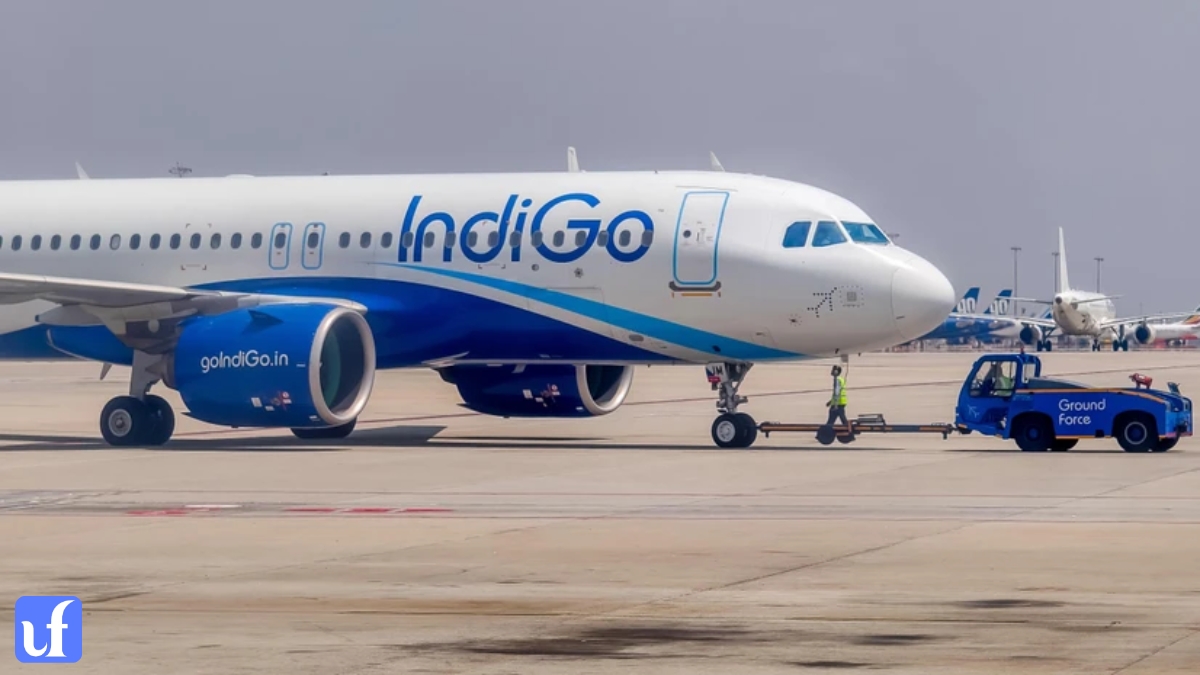Imagine a world where affordable air travel connects every corner of India and reaches far beyond its borders. That’s the vision driving IndiGo, India’s leading low-cost airline. With a reputation for punctuality and cost-efficiency, IndiGo has become a household name for millions of travelers. But the airline isn’t stopping there. Its ambitious IndiGo expansion plans are redefining what it means to fly, both domestically and internationally. Whether you’re planning your next trip or simply fascinated by aviation trends, this article explores how IndiGo Airlines is scaling up—new IndiGo routes, advanced aircraft, and a commitment to sustainability—all while keeping passengers at the heart of its journey.
Table of Contents
Overview of IndiGo’s Expansion
IndiGo’s growth isn’t just about adding flights—it’s about building a network that makes air travel accessible to more people than ever before. As of 2025, IndiGo operates over 2,200 daily flights, connecting 127 destinations—91 domestic and 36 international. This reach means 87% of India’s population lives within 100 kilometers of an IndiGo-served airport. The airline’s expansion strategy hinges on two pillars: strengthening its domestic dominance and accelerating its global presence.
Domestic Expansion
IndiGo’s grip on India’s domestic market is tightening. Its market share has nearly doubled in recent years, jumping from 15% to 30%. How? By adding new IndiGo flights and increasing frequencies on existing routes. The airline is tapping into Tier-II and Tier-III cities, making air travel a reality for millions more.
- Recent Developments:
- New flights from Hindon Airport to cities like Bengaluru, Mumbai, and Kolkata.
- Expanded services from Bengaluru to destinations such as Surat, Goa, Varanasi, and Patna.
- Impact: Enhanced connectivity from key hubs like Bengaluru ensures travelers have more options, while smaller cities gain better access to major metros.
International Expansion
IndiGo isn’t just staying local—it’s going global. The airline aims to boost its international capacity share from 28% to 40% by 2030. With new aircraft and strategic partnerships, IndiGo is venturing into long-haul markets like Europe and Southeast Asia.
- New Routes:
- Direct flights from Mumbai to Amsterdam and Manchester, launching IndiGo into Europe.
- Upcoming services to Bishkek (Kyrgyzstan) and Siem Reap (Cambodia).
- Partnerships: Codeshare agreements with Delta Air Lines, Air France-KLM, and Virgin Atlantic amplify IndiGo’s global reach.
This dual focus—domestic depth and international breadth—positions IndiGo Airlines as a formidable player on the world stage.
Fleet and Infrastructure
To fuel its expansion, IndiGo is investing heavily in its fleet and ground operations. As of March 2025, the airline boasts 437 aircraft, primarily Airbus A320s, with plans to integrate game-changing models like the Airbus A321XLR and A350-900.
Fleet Expansion
IndiGo’s fleet upgrades are key to its long-haul ambitions:
- Airbus A321XLR: Slated for delivery in mid-2025, this aircraft will enable nonstop flights up to 8,700 kilometers—think Mumbai to London or Delhi to Tokyo.
- Boeing 787 Dreamliners: Wet-leased from Norse Atlantic Airways, these wide-bodies are already flying to Manchester and Amsterdam, with more European routes in the pipeline.
- Airbus A350-900: An order for 60 A350s signals IndiGo’s entry into the premium long-haul market.
- Fun Fact: IndiGo’s fleet renewal ensures it operates one of the youngest and most fuel-efficient fleets globally, averaging under five years old.
Infrastructure Development
A bigger fleet demands robust support systems. IndiGo is building a state-of-the-art Maintenance, Repair, and Overhaul (MRO) facility in Bengaluru. This hub will keep its aircraft in top shape, reduce downtime, and support the airline’s rapid growth.
- Why It Matters: Enhanced infrastructure means fewer delays and a smoother travel experience for passengers.
Sustainability and Innovation
Growth isn’t just about scale for IndiGo—it’s about responsibility and forward-thinking. The airline is weaving sustainability and innovation into its expansion strategy.
Sustainability Efforts
IndiGo is committed to reducing its environmental footprint:
- Fuel Efficiency: Over 78% of its fleet features next-gen, fuel-efficient engines, cutting CO₂ emissions significantly.
- Zero Waste: At Indore Airport, IndiGo recycled over 70,000 kg of waste in FY 2025.
- Green Initiatives: The airline planted over 1.8 lakh saplings in the same period, contributing to carbon offset efforts.
Technological Innovations
IndiGo is also enhancing the passenger experience with tech-driven solutions:
- Digital Tools: The revamped IndiGo website and app, paired with the AI chatbot “6Eskai,” streamline booking and support.
- Premium Offerings: IndiGoStretch, a new business class product, offers perks like complimentary meals and priority boarding.
These efforts show that IndiGo flights aren’t just about getting from A to B—they’re about doing so responsibly and comfortably.
Frequently Asked Questions (FAQs)
1. What new routes is IndiGo planning to introduce in 2025?
IndiGo is rolling out an exciting lineup of routes in 2025. Internationally, the airline has launched direct flights from Mumbai to Amsterdam and Manchester, marking its European debut. More destinations like Bishkek in Kyrgyzstan and Siem Reap in Cambodia are on the horizon, expanding its footprint in Central Asia and Southeast Asia. Domestically, IndiGo is boosting connectivity with new flights from Hindon Airport to Bengaluru, Mumbai, and Kolkata, plus additional services from Bengaluru to cities like Goa and Varanasi. These additions cater to growing travel demand and make IndiGo routes more diverse than ever. Keep an eye on their official site for the latest updates!
2. How is IndiGo improving its services for passengers?
IndiGo is upping its game to ensure a better travel experience. The standout upgrade is IndiGoStretch, a business class offering launched in 2025, featuring advance seat selection, complimentary meals, and extra legroom—perfect for travelers seeking comfort on a budget. On the tech front, IndiGo’s AI chatbot “6Eskai” and revamped mobile app make booking and managing flights a breeze. These enhancements reflect IndiGo’s focus on blending affordability with quality, ensuring IndiGo Airlines remains a top choice for flyers.
3. What is IndiGo’s strategy for sustainability?
Sustainability is a cornerstone of IndiGo’s expansion. The airline operates a fleet where over 78% of aircraft are fuel-efficient, reducing emissions significantly. Its Zero Waste Initiative has recycled over 70,000 kg of waste at Indore Airport, while a massive tree-planting drive—1.8 lakh saplings in FY 2025—helps offset carbon. These efforts align with global aviation goals and show that IndiGo is serious about flying green. Travelers can feel good knowing their journey supports a cleaner planet.
4. When will IndiGo receive its first Airbus A321XLR?
IndiGo’s first Airbus A321XLR is set to arrive in June 2025, a milestone in its long-haul strategy. This aircraft, with a range of 8,700 kilometers, will unlock nonstop flights to destinations like Western Europe and East Asia. It’s a big leap for IndiGo flights, enabling the airline to compete on international routes traditionally dominated by full-service carriers. Expect announcements about new routes once the A321XLR takes flight!
5. How does IndiGo’s fleet expansion support its growth?
IndiGo’s fleet growth is the backbone of its expansion. With 437 aircraft in 2025, including the upcoming A321XLR and A350-900, IndiGo is equipped for both short-haul efficiency and long-haul reach. The wet-leased Boeing 787 Dreamliners already connect India to Europe, while the A350 order—60 aircraft—signals a future in premium travel. This mix ensures IndiGo Airlines can handle increased demand and explore new markets seamlessly.
6. Why is IndiGo focusing on international expansion?
IndiGo’s international push is driven by opportunity and ambition. With India’s domestic market nearing saturation, the airline sees untapped potential abroad. By targeting a 40% international capacity share by 2030, IndiGo is capitalizing on rising global travel demand. New routes to Europe, partnerships with airlines like Delta, and advanced aircraft like the A321XLR make this possible. For passengers, it means more IndiGo routes to explore the world affordably.
Conclusion
IndiGo’s expansion is a bold leap forward, blending ambition with practicality. From connecting India’s smallest towns to landing in Europe’s biggest cities, IndiGo is rewriting the rules of affordable air travel. Its focus on fleet innovation, sustainability, and passenger comfort ensures it’s not just growing—it’s thriving. As IndiGo charts this exciting course, there’s plenty for travelers and aviation fans to watch. What do you think of IndiGo’s plans? Drop a comment below or share this article with fellow flyers!









